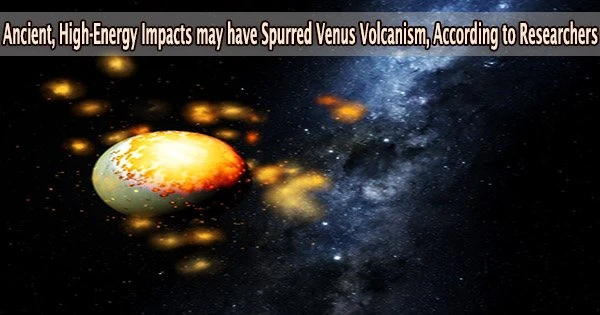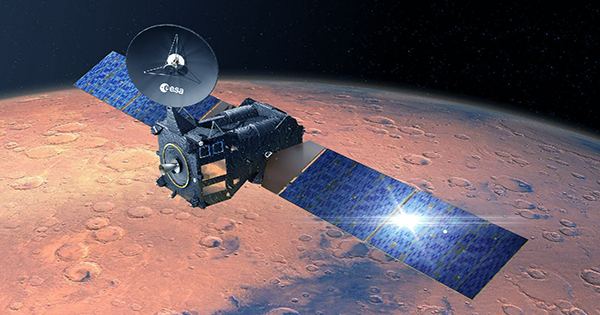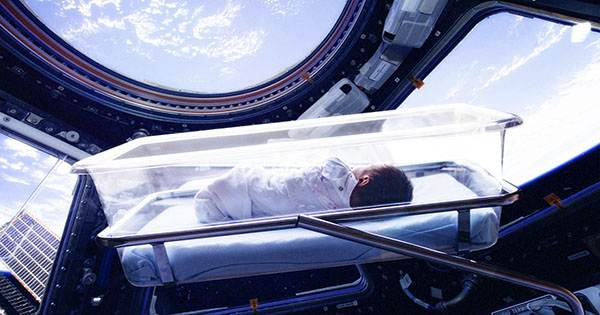In order to understand how Venus, Earth’s sister planet, has kept a young surface while missing plate tectonics, a team led by the Southwest Research Institute developed a model of the early impact history of Venus.
The scientists studied the two worlds’ early collision histories and came to the conclusion that Venus was likely the victim of faster, more energetic collisions, which produced a superheated core that encouraged extended volcanism and resurfaced the planet.
“One of the mysteries of the inner solar system is that, despite their similar size and bulk density, Earth and Venus operate in strikingly distinct ways, particularly affecting the processes that move materials through a planet,” said Dr. Simone Marchi, lead author of a new paper about these findings in Nature Astronomy.
As pieces of the crust smash to build mountain ranges, the Earth’s shifting plates continuously modify its surface and, in some locations, encourage volcanism. Venus is the planet in the solar system with the most volcanoes, but it only has one continuous plate covering its surface.
More than 80,000 volcanos 60 times more than Earth have played a major role in renewing the planet’s surface through floods of lava, which may continue to this day. Previous simulations struggled to create scenarios to support this level of volcanism.
“Our latest models show that long-lived volcanism driven by early, energetic collisions on Venus offer a compelling explanation for its young surface age,” said Professor Jun Korenaga, a co-author from Yale University. “This massive volcanic activity is fueled by a superheated core, resulting in vigorous internal melting.”
Venus internal conditions are not well known, and before considering the role of energetic impacts, geodynamical models required special conditions to achieve the massive volcanism we see at Venus. Once you input energetic impact scenarios into the model, it easily comes up with the extensive and extended volcanism without really tweaking the parameters.
Professor Jun Korenaga
In the same region of the solar system, solid materials collided and eventually merged to produce the two rocky planets of Earth and Venus. The planets’ small variations in distance from the sun altered their impact histories, specifically the frequency and nature of these occurrences.
These variations result from Venus’s proximity to the sun and faster orbital speed, which energize impact circumstances. In addition, the impactors that dominate the tail of collisional growth often come from beyond Earth’s orbit and smash with Venus rather than Earth since Venus requires a higher orbital eccentricity.
“Higher impact velocities melt more silicate, melting as much as 82% of Venus’ mantle,” said Dr. Raluca Rufu, a Sagan Fellow and SwRI co-author. “This produces a mixed mantle of molten materials redistributed globally and a superheated core.”
A few major impacts may have resulted in substantially different results, with huge ramifications for the future geophysical history, if impacts on Venus had a significantly higher velocity than on Earth.
In order to evaluate the effects of these impacts on the long-term development of Venus, the multidisciplinary team pooled expertise in large-scale collision modeling and geodynamic processes.
“Venus internal conditions are not well known, and before considering the role of energetic impacts, geodynamical models required special conditions to achieve the massive volcanism we see at Venus,” Korenaga said. “Once you input energetic impact scenarios into the model, it easily comes up with the extensive and extended volcanism without really tweaking the parameters.”
And the timing of this new explanation is serendipitous. In 2021, NASA committed to two new Venus missions, VERITAS and DAVINCI, while the European Space Agency is planning one called EnVision.
“Interest in Venus is high right now,” Marchi said. “These findings will have synergy with the upcoming missions, and the mission data could help confirm the findings.”
















